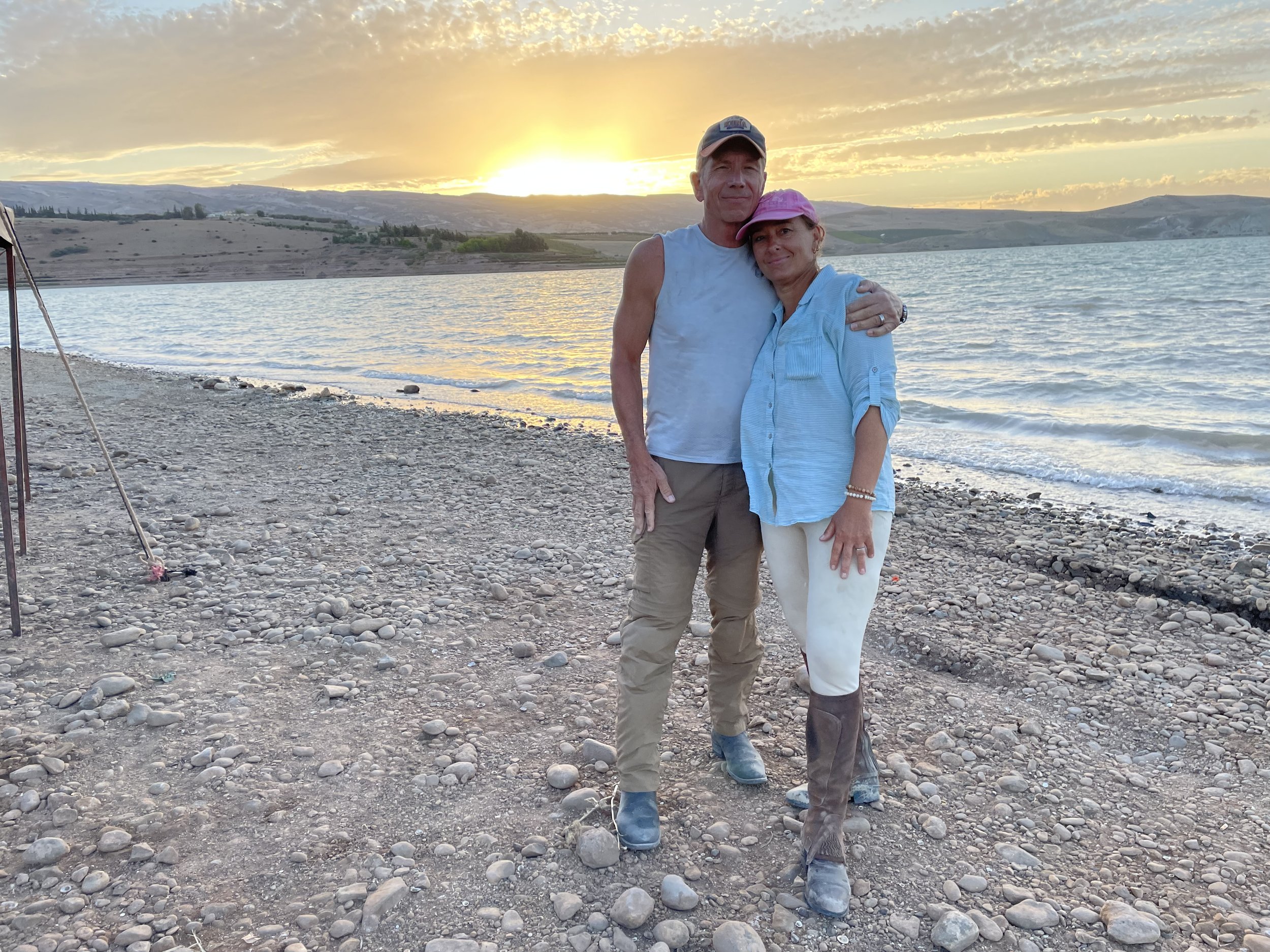Morocco -- The Reckoning
Not a picture of a horse that’s worked hard
I was once a pretty committed runner; not a marathoner but running a marathon distance over the course of most every week. I felt good about my mediocre speed and distance and never was tempted to compare myself to an ultra-runner. I was once a pretty committed rock climber, climbing advanced intermediate routes at a gym several times a week and outdoors several times a year. I always aspired to conquer harder routes, but I would never compare myself to the elite climbers that seemed to do them with ease. Those athletes had honed their bodies to a single sport, melting off anything not necessary for it so it need not be carried. I liked my bit of fat; it padded my fanny on long horse rides, kept me warm on a cold ski days.
In this blog, I’ve spoken of the work it’s taken ME to do this. But the elephant in the room is the horse. For, in fact, it is the horse that does 95 percent of the work. The rider’s job is to set direction and pace and then be the lightest, least annoying luggage possible. Endurance horses are ultra-athletes, and, like ultra-athletes, their bodies can look shockingly spare. Managing endurance horses requires achieving the fine balance between minimizing muscle mass and surplus fat to make the animal light and not carving off so much that resilience is impaired. And that balance is very individual to each horse.
If Day 4 is The Crux of this ride, then Day 5 should rightly be called The Reckoning. We started Day 5 with a truck ride from our lovely hotel near the Fez medina to the camp outside the walls of the city. It would be a shorter ride day, so we’d been allowed to sleep in and only picked up to make a 10:00 saddle up. After Day 4, I’d insisted that Gharnak be given a day in the trailer. Stallions are not allowed to run alongside the riders as the free horse; so, it would either be the trailer for him or another day under saddle. I’d ridden him four days and he’d carried me so well. But, by the close of Day 4, he’d naturally fallen to the back of the herd; no longer requiring me to convince him that this place at the rear was our proper location. I wanted to finish the ride on him on Day 6 and Rena obliged my motherly concerns for his well-being. I’d be riding Delphina, a mare that had run free most days and was, in fact, carrying Gharnak’s foal. She looked fresh, ready. A few of the other horses did not.
We’d discussed horse assignments the night before, but Rena had made some adjustments seeking to put lighter riders on horses that had carried heavier or that had sores or tender spots. She probably would have chosen to put another rider on Gharnak had I not guarded his rest day like a hawk. And, in fact, he was saddled and given to another rider after the lunch break so the other stallion she’d been riding, who had visible sores could be trailered.
Saddled the horses showed no signs of distress, striding out with the same willingness as before, but you could see a change in the riders. Some, like the horses, were physically suffering. Kurt’s lower back was in spasm, and he stood to the side collecting himself mentally for what would likely be a painful day. Even among those of us who had hit our stride, there was a quality of reserve. This was getting real, and horses were paying the price for our passions.
Some readers may question the ethics of subjecting an animal to possible harm for sport. It’s a valid question in America or Europe. In this Thoroughbred racing season alone, a dozen horses died at the racetrack where the Kentucky Derby is run. That is simply not acceptable. But is the same standard valid in Morocco?
Earlier, Rena had said the horses were her children. I’d responded, “You work your children hard.” “Life is work,” she’d replied with a wry smile. The life of a horse in Morocco is, indeed, hard work. There is little natural grazing and acquiring grain and fodder is both expensive and subject to supply chain challenges. Most horses, when not in work, are hobbled, taken out to a field with no shade and sparse vegetation, and staked to the ground without water. Rena’s horses live like kings in comparison to their brethren and she saves as many animals from this life as she can.
Still, it was becoming clear that for some of these ultra-athletes, the balance was a precarious one. She maintains 70 horses on her small farm. The revenue she earns from leading these rides is essential to the maintenance of that herd. She and her endurance horses work hard in support of their family. Life is work, and for some the work is harder.

